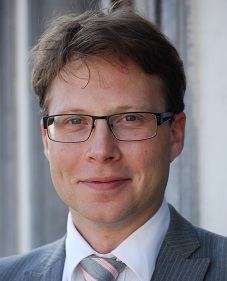Johan Elvnert has been Managing Director of the Forest-based Sector Technology Platform (FTP) since 2011. His role is to coordinate the European research and innovation efforts in the forest-based sector as expressed by the FTP’s Strategic Research and Innovation Agenda. Elvnert is also a member of the European Bioeconomy Panel. Previously, Johan Elvnert worked at the European Commission DG Research & Innovation and he has a Master of Science in Molecular Biotechnology Engineering from Uppsala University.

Johan has been leading the VERAM activities under Work Package 5 related to the establishment and consolidation of the Research and Innovation Roadmap 2050.
1 – The main goal of VERAM is to deliver a Vision and Research and Innovation Action (RIA) Roadmap for European Raw Materials in 2050. Why a raw materials research roadmap?
Securing a reliable access to raw materials and sustainable value-chains in Europe is crucial to boosting safety and growth in Europe. Today, the EU is dependent on imports of many raw materials that are crucial for a strong European industrial base. At the same time, the European biotic raw material sector provides means to tackle climate change by replacing fossil-based raw materials with sustainable, renewable raw materials sourced in Europe.
Yet, innovation in raw materials value chains could benefit from a stronger cooperation by different raw material value chains sharing some objectives and pooling resources to achieve them together. With a research and innovation roadmap to 2050, a more coordinated approach towards raw materials management will help reduce external supply dependency and lead to an efficient use of resources.
2 – What will be the importance of the raw materials sector in the 2050 society?
The acceleration in digitalisation, technological innovation and changing consumer behaviour are all factors reshaping the future of both products and processes. Raw materials stakeholders recognise the changes in society and challenges faced by the whole EU economy and remain strongly convinced that raw materials will continue to play a key role in the EU’s competitiveness and societal well-being.
3 – What will be the main challenges and drivers for the raw materials sector by 2050 and how can we face them?
We as a civilization are steadily becoming more concerned about our environmental footprint. In the meantime, globalisation, disruptive technologies and demographic trends such as urbanisation have all changed conditions for many Europeans. It might sound quite gloomy, but we are optimistic. Emerging technologies, digitalisation and smart applications provide solutions for sustainably sourced raw materials and enable a shift towards a more resource-efficient, circular economy driven by industry, policymakers and European citizens together.
In the future, Europe is confronted with several challenges along the entire raw materials value chain composed of exploration and management, extraction and harvesting, processing and refining, manufacturing, use and recycling as well as substitution. A long-term roadmap to 2050 aims to tap the full potential of raw materials supply and use in Europe and to boost the innovation capacity of the sector, turning it into a strong, sustainable pillar of the EU economy and an attractive industry, whilst addressing societal and environmental challenges and increasing benefits for society.
4 – How is the VERAM roadmap structured + Could you summarise the importance of each priority area of the roadmap?
The roadmap distinguishes minerals, metals and biotic raw materials encompassing the entire value chain from primary raw material exploration, extraction, management and harvesting and their transformation through processing or refining, and the valorisation of waste into secondary raw materials to closed loops material flows and the development of new products and applications. In the roadmap, minerals, metals and the biotic sectors have identified four interlinked priorities and nine research and innovation areas, including a number of concrete activities with a view to addressing the key concerns of the raw materials community, as well as society and citizens at large.
5 – The outcomes delivered by VERAM and presented during the final conference, will ultimately feed into the ongoing preparation of the next EU Framework Programme for Research and Innovation, FP9. What can stakeholders expect from the discussions taking place in April?
In the light of future EU Framework Programmes for Research and Innovation, significant investment in research and innovation, as well as fostering synergies between and across the different value chains are needed in order to master major future challenges related to innovation, digitalisation and sustainability. This roadmap represents a more structured discussion about cross-cutting research and innovation activities that embrace the development and deployment of smart, innovative and sustainable technologies for raw materials. We have been very careful to always ask for the opinion and expertise of the raw materials community in the process of making the VERAM 2050 roadmap. If a wider community is willing to continue these joint efforts towards the goals envisaged by the roadmap, then we believe that we have staked out the direction for a more competitive and sustainable future for the EU, based on a prospering European raw materials sector.